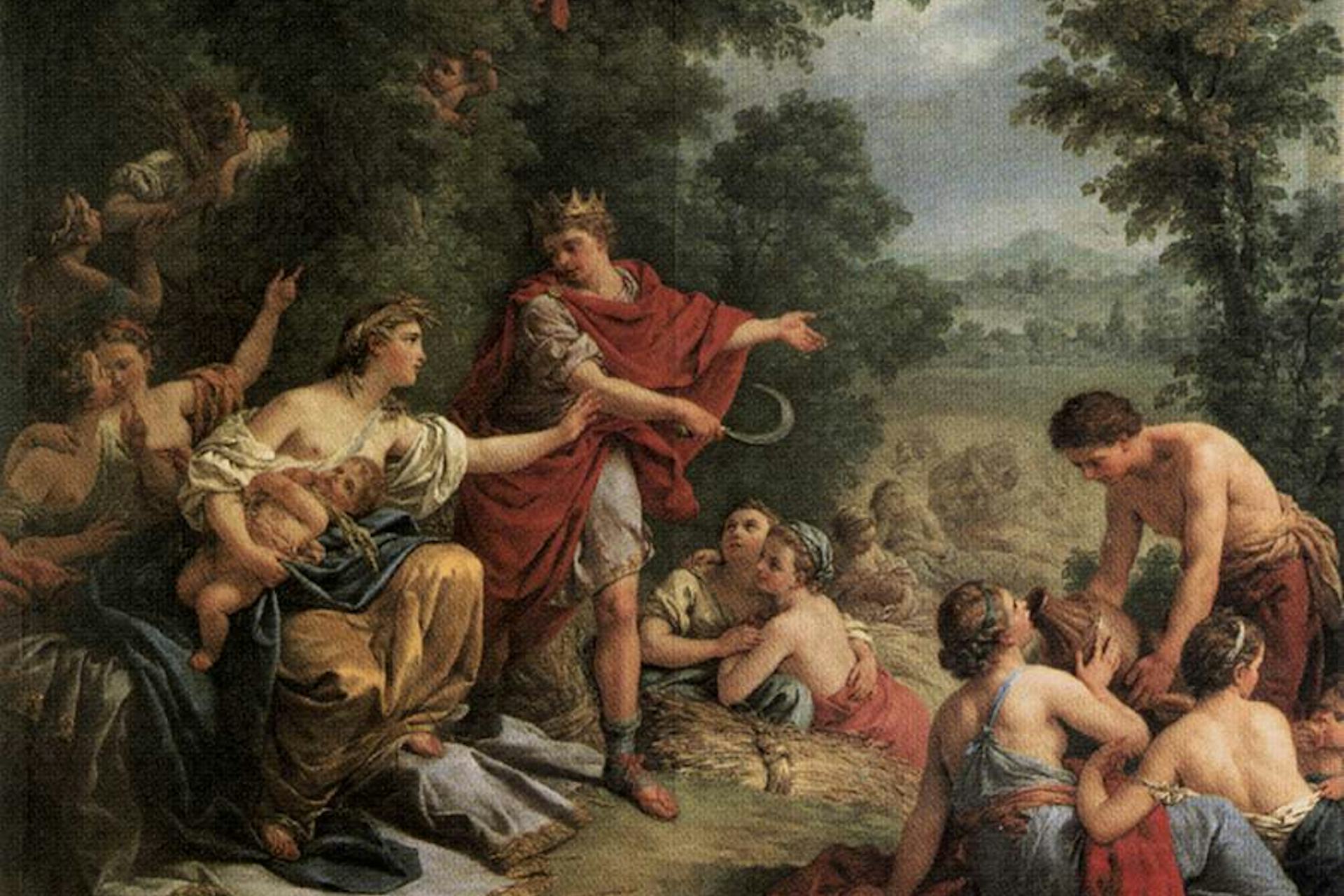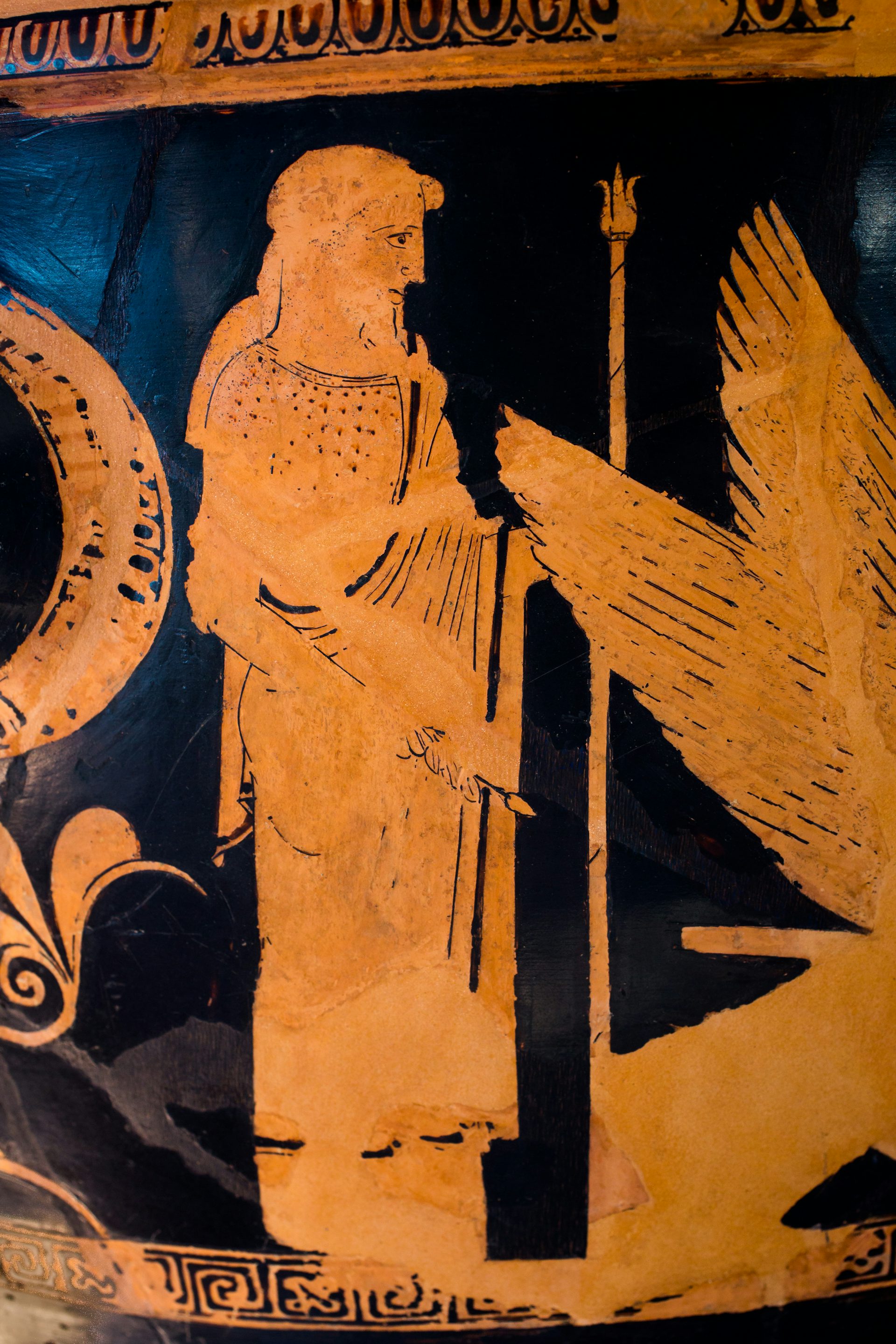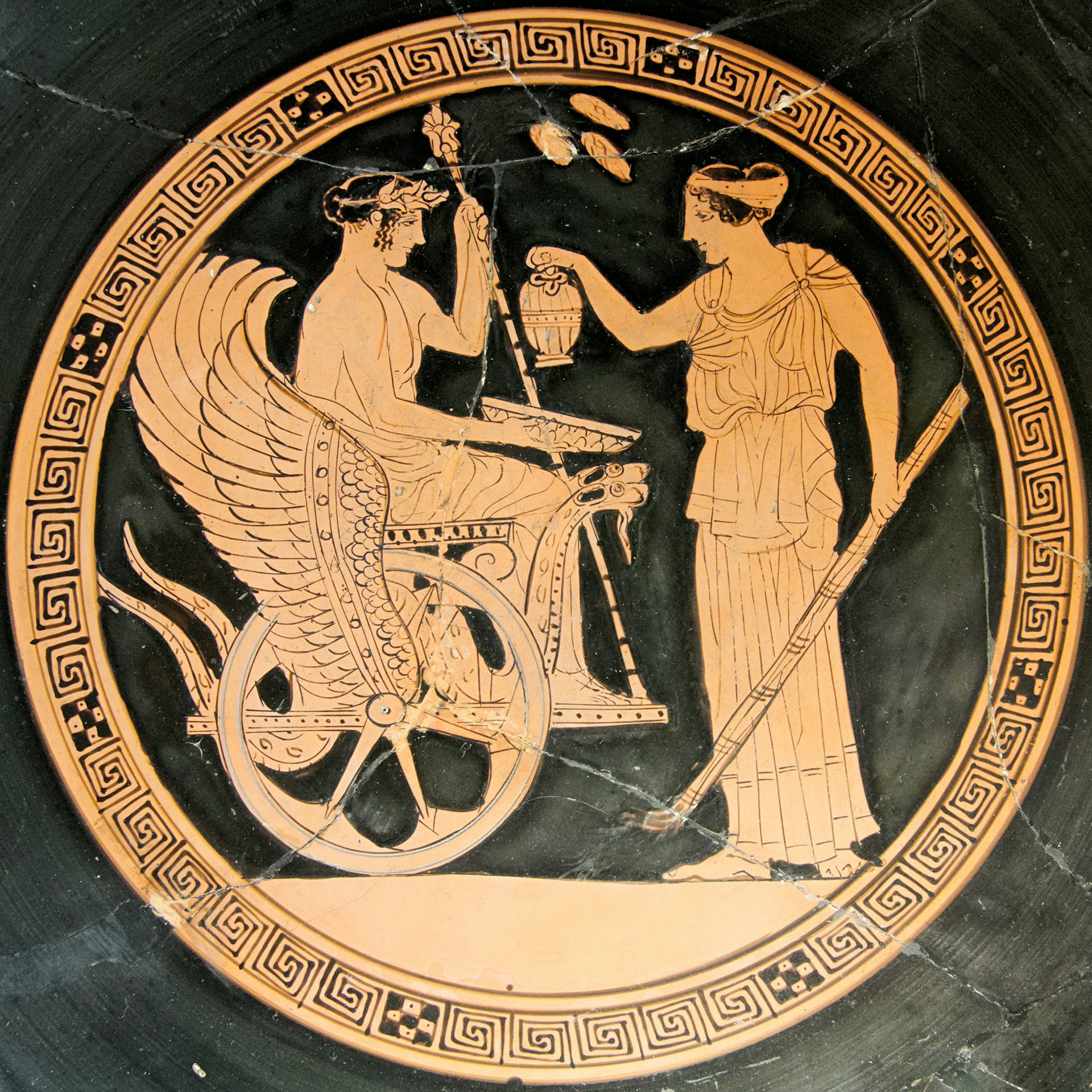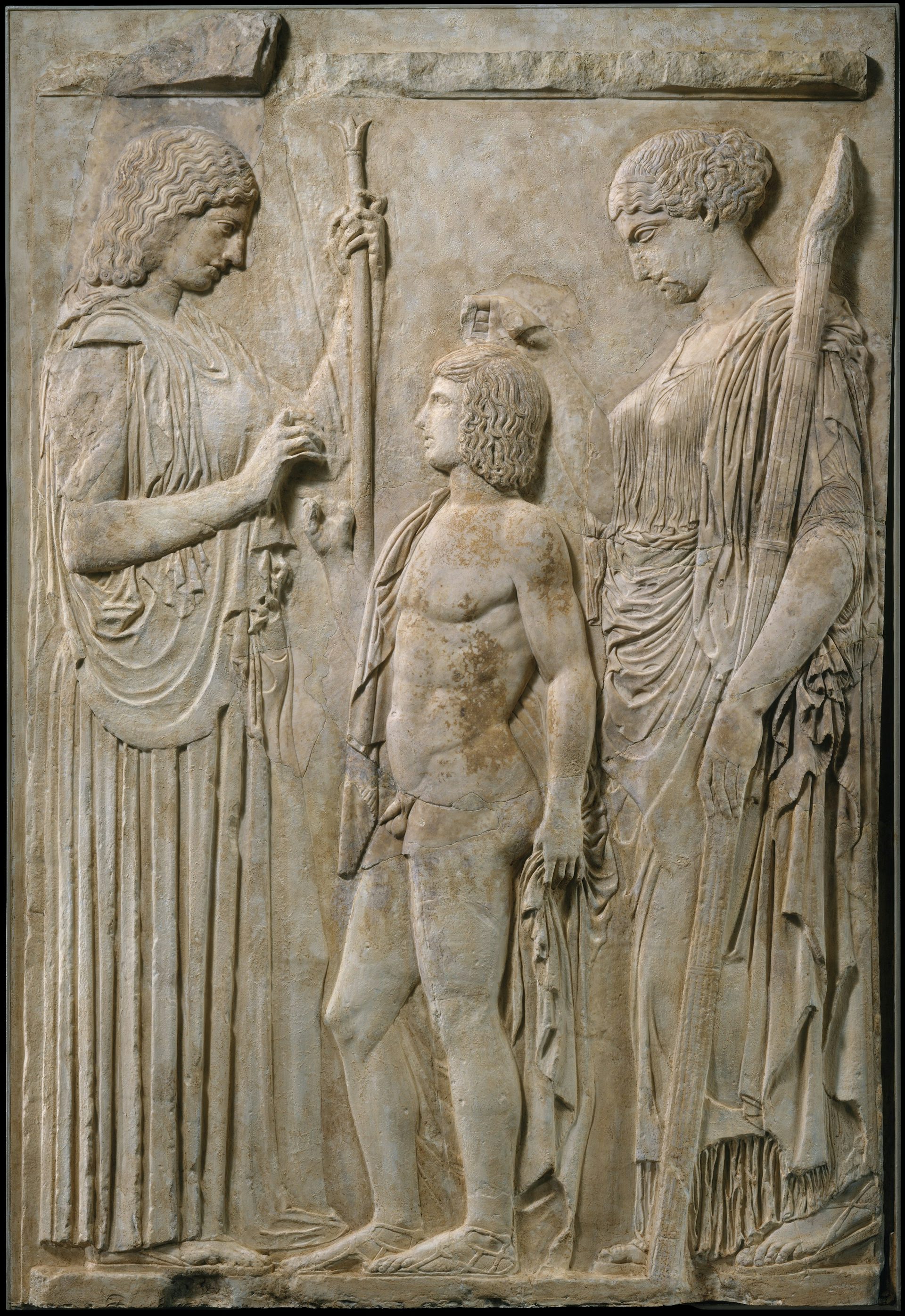Triptolemus

Ceres Teaching Agriculture to King Triptolemus by Louis-Jean-François Lagrenée (1769)
Palace of VersaillesPublic DomainOverview
Triptolemus was a hero and prince from the city of Eleusis in Attica. The goddess Demeter taught him the art of agriculture (as well as her rites), and he traveled far and wide in order to spread this knowledge.
In art, Triptolemus was often represented traveling the world in his chariot, which was sometimes shown as winged or drawn by giant snake-like dragons. After his death, he received cult honors at Eleusis.[1]
Who were Triptolemus’ parents?
The identities of Triptolemus’ parents varied widely across ancient sources. He was sometimes called the son of the Eleusinian king Celeus, but other sources made him the son of a man named Eleusis, of the hero Dysaules, or even of the gods Oceanus and Gaia.

Possible representation of Celeus from an Attic red-figure bell-krater by the Niobid Painter (ca. 460 BCE)
Museo Archeologico Nazionale dell'Umbria, Umbria / ArchaiOptixCC BY-SA 4.0What were Triptolemus’ attributes?
Triptolemus’ most important and recognizable attribute was his chariot. In literature, this chariot was said to be drawn by dragons or serpents, while in art it was sometimes shown as winged.
Triptolemus received his magical chariot from Demeter, the goddess of agriculture. Demeter taught him the art of agriculture, then gave him the chariot so he could travel far and wide disseminating this art.

Attic red-figure cup by the Aberdeen Painter (ca. 470–460 BCE) showing Demeter (right) with Triptolemus (left)
Louvre Museum, Paris / JastrowPublic DomainTriptolemus Brings Agriculture to Greece
Triptolemus was best known for teaching agriculture to the Greeks (and much of the rest of the world). He had been taught this art by Demeter, the goddess of agriculture herself, who was strongly connected with Triptolemus’ city of Eleusis in Attica.
Triptolemus rode around the world in a flying chariot, spreading the art of agriculture. In some myths, he was challenged along the way or even robbed of his chariot. But Demeter always came to Triptolemus’ rescue, defending his life and ensuring that pretenders and bandits did not get their hands on his mythical vehicle.

Fragment of the "Great Eleusinian Relief" showing Demeter (left) and Persephone (right) with the young Triptolemus (center), Roman copy (ca. 27 BCE–14 CE) after a Greek original (ca. 450–425 BCE)
National Archaeological Museum, AthensPublic Domain